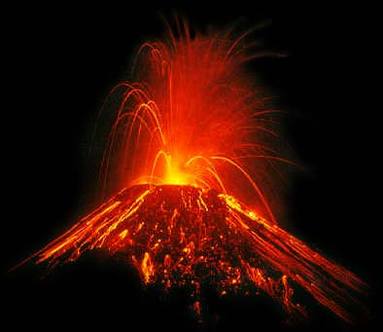Mount. Fuji is created by extrusive volcanic landform. The volcano is a perfect example to study the type of volcanic landform called composite/strato volcano. Stratovolcanoes can be as high as eight thousand feet or more, such as Mt. Fuji being 12,388 feet high. Stratovolcanoes erupt with a great force intend to hurt or kill its surrounding.
 |
| View of Mount Fuji from the city's perspective |
Stratovolcanoes are also known composite volcanoes because
the volcano is created by composite layers of eruptive materials. A composite or
stratovolcano is shaped conically by layers (strata) called tephra, volcanic
ash, hardened lava, and pumice. Stratovolcanoes are distinguished by explosive
and effusive eruptions.
When the volcano erupts, the flowing lava cools and hardens
before spreading to high viscosity. The lava formation of stratovolcanoes is produce by
magma containing felsic which has high to intermediate levels of silica such as
rhyolite, dacite, or andesite and less amounts of mafic magma. The lava is so
thick that it cannot travel far down the slope of the volcano before the lava
has a chance to cool down. This gives the volcano steep sides. Small rock and
ash gush out from the eruption that rest on the sides of the volcano.
 |
| Eruption of Mt. Fuji 1707 |
In the magma chamber, pressure is construct as gas under
enormous heat and pressure then disintegrates in liquid rock. When magma
touches the spillway, the gases in the chamber explode because pressure is release.
Stratovolcanoes can explode from the sides of the cone as well, since it is
formed underground.
 |
| Eruption of Mt. Fuji 1707 |
Studying exctrusive volcanic landforms is important because it will determine what causes the eruption of composite/stratovolcanoes and the behavior of the volcano. Although we cannot prevent the environmental cause of the eruption, volcanologists can predict when a volcano is going to explode and they can alert people who are in the surrounding of the mountain. As of today, Mt. Fuji can still erupt at any time.
References

No comments:
Post a Comment